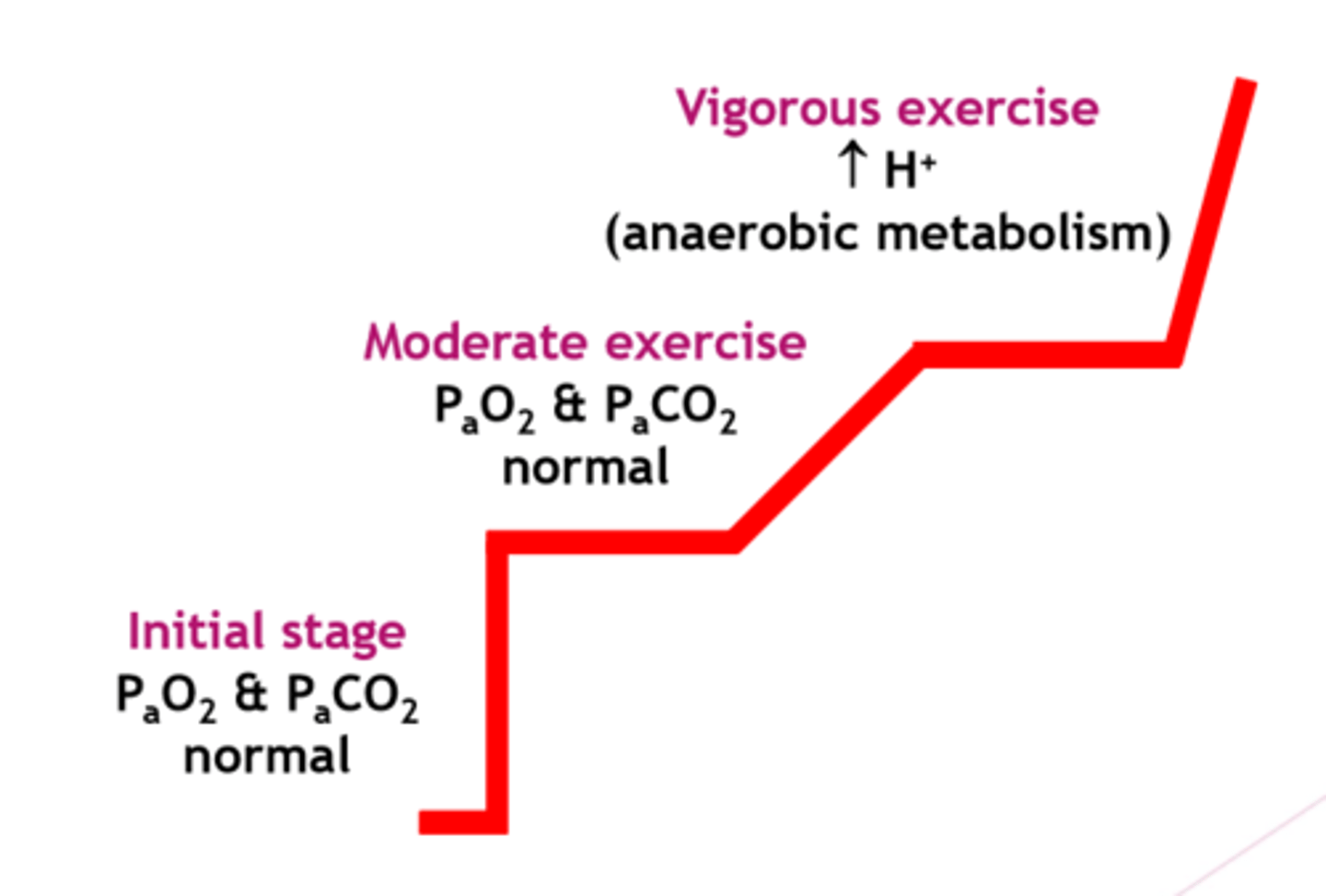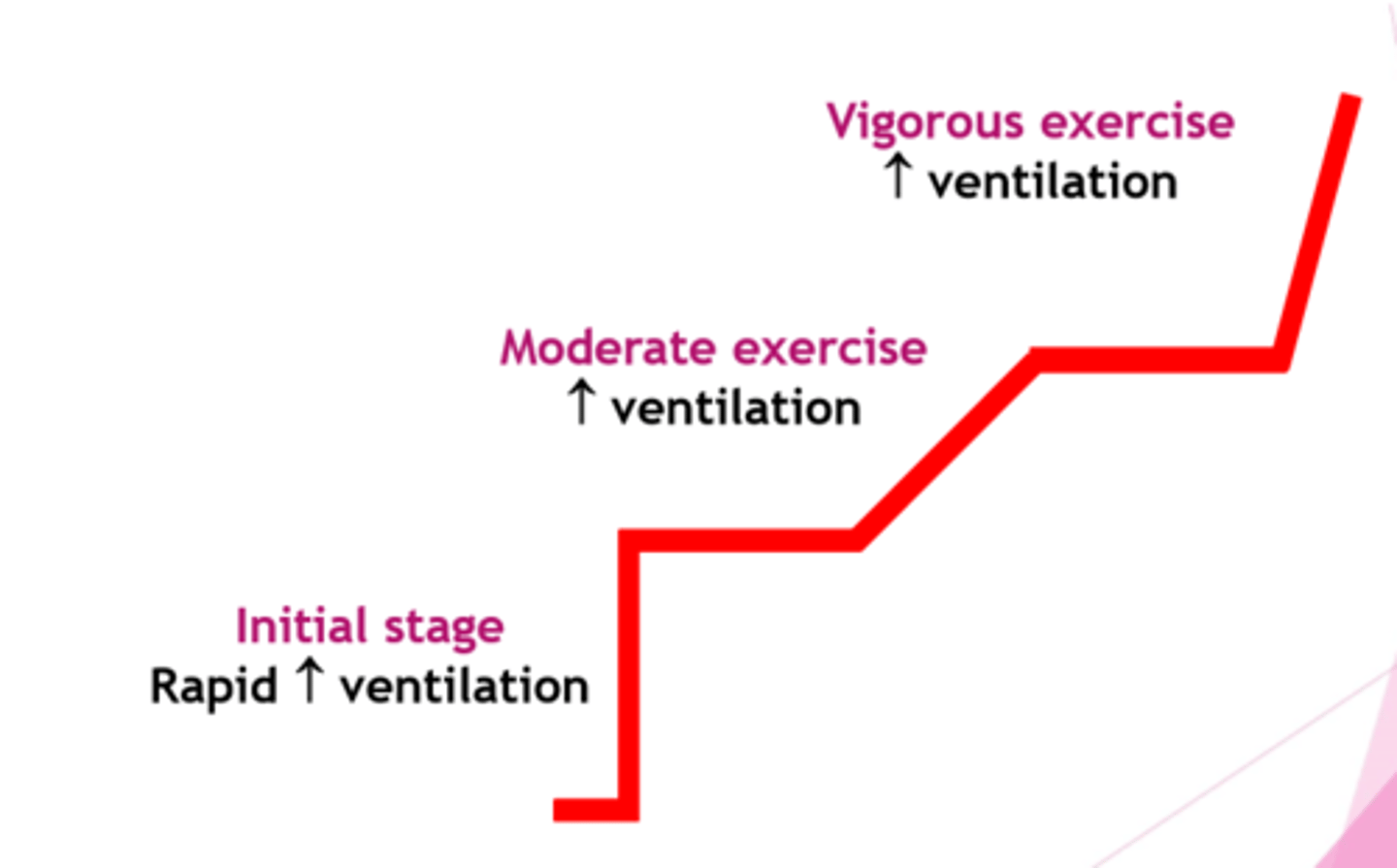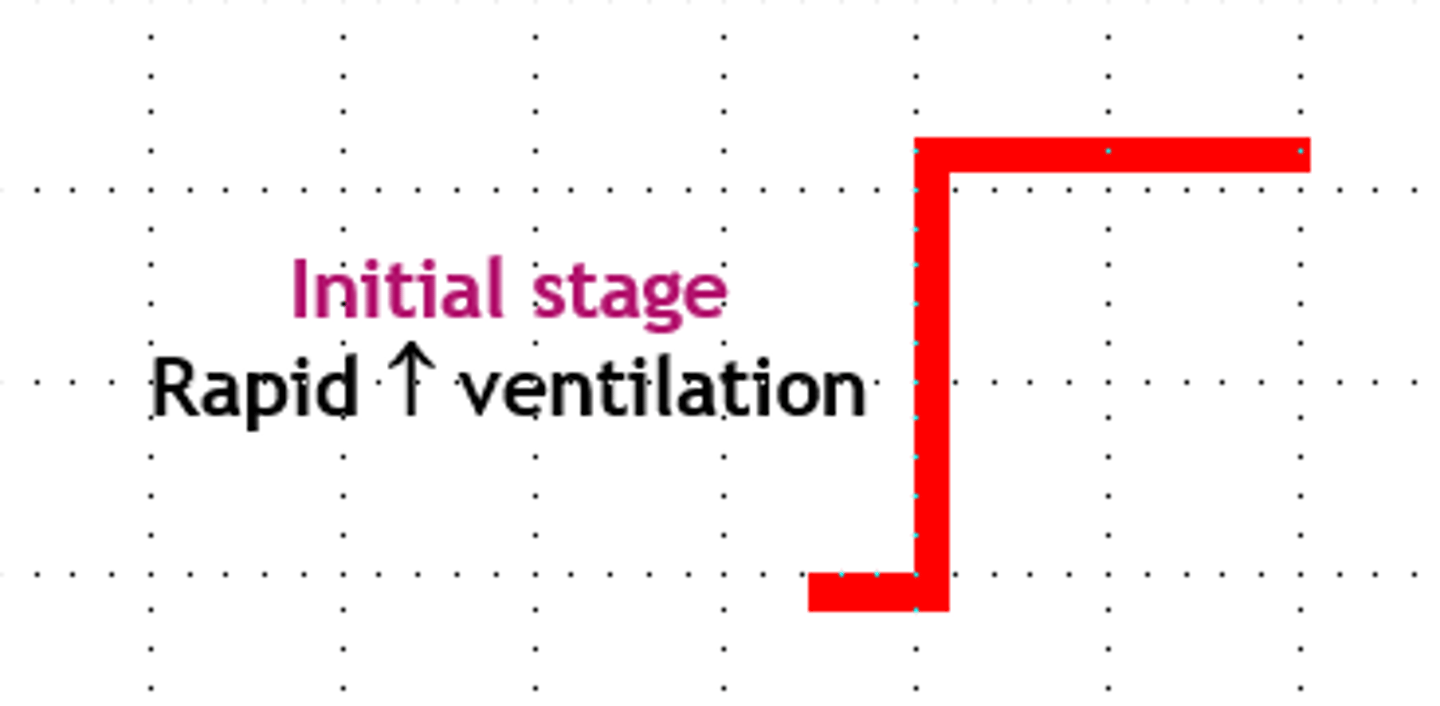Respiration under Unusual Conditions 26/01
1/15
There's no tags or description
Looks like no tags are added yet.
Name | Mastery | Learn | Test | Matching | Spaced |
|---|
No study sessions yet.
16 Terms
How does arterial blood gases change during exercise?
In Initial stage and during moderate exercise PaO2 and PaCO2 normal
In vigorous exercise there's an increase in H+ conc from anaerobic metabolism

How does ventilation rate change during exercise (2)?
In initial stage there's rapid increase in ventilation
In moderate and vigorous exercise increase in ventilation

Why is there a rapid increase in ventilation during changes in ventilation during exercise?
•Attributed to motor centre activity and afferent impulses from proprioceptors of the limbs, joints and muscles
•Neural control – activates the respiratory centres in the brain

What are the potential mechanism of increasing ventilation during exercise?
Mechanism not understood
- peripheral chemoreceptor responsible for increasing ventilation?
- central chemoreceptors increase ventilation to maintain carbon dioxide conc

What are the adaptations that happen during exercise?
• Increase in blood flow to muscles > increase in cardiac output > increase in oxygen consumption
• Decrease in pH and increase in temperature > unloading O2 from blood into muscle
What are the effects of altitude on the body? (4)
1. Hypoxia,
2. Loss of appetite,
3. Changes in mental performance,
4. Insomnia
What is acute hypoxia detected by?
Peripheral chemoreceptors, they try to increase breathing
Why can the system be trapped in high altitude from acute hypoxia?
Breathe more = die from alkalosis
don’t breathe more = die from hypoxia
How does the body adapt to a high altitude?
1. Acute hypoxia detected by peripheral chemoreceptors.
2. More ventilation.
3. PaCO2 falls, CSF becomes alkaline due to more HCO3-.
4. Choroid plexus cells move HCO3- from CSF to correct pH.
5. Hypoxic drive reinstalled, more ventilation.
5. Over hours, breathing is controlled at new low PaCO2.
6. Over days, blood alkalinity is corrected by HCO3- urine excretion.
What are the adaptations to high altitude in chronic exposure?
Oxygen carrying capacity of blood is increased with adaptations like 2,3-DPG and polycythaemia
- Cardiac output is increased and directed to vital organs
- Systemic acid-base imbalance is corrected
What are the 2 cures for high altitude?
1. Acclimatisation - body adjusting (breathing faster , making more RBC)
2. Descent -You adjust (goin down where O2 is higher)
Effects of diving exposure
Impacts on the body from scuba diving, including changes in lung function, gas exchange, and risks of nitrogen narcosis (affects brain - feeling drunk) and decompression sickness (nitrogen bubbles block blood flow )
What are physiological responses to diving exposure?
1. Increase in FVC - maybe due to dense gas pp.
2. Loss of lung function - due to hyperoxia and decompression stress.
3. Hyperoxia due to increased PaO2 at more depth - can lead to toxicity, airway inflammation.
4. Soluble nitrogen (normally insoluble at sea level) leading to decompression sickness (during ascent) and narcosis (during descent).
What is nitrogen narcosis?
Intoxication caused by nitrogen at sea depth descent, leading to impaired judgment and coordination, similar to alcohol intoxication
What is decompression sickness?
Condition resulting from the formation of nitrogen bubbles in the blood and tissues during ascent from a dive, causing joint pain, dizziness, and potentially life-threatening complications
Which clinical condition would make individuals more susceptible to the effects of diving?
Asthmatics
increased risk of gas trapping and difficulty equalizing pressure